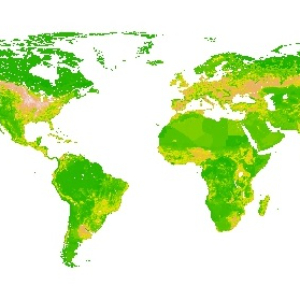You are viewing the Initial Version, the most recent version of this dataset.
1 version(s) available
Date of publication: December 5, 2022
Version 1
Date of publication: December 5, 2022
Type of change:
Description:

Historical local species richness (PREDICTS)
by Samantha HillModelled historical local species richness relative to pristine baseline with a spatial resolution of 0.25 degrees for 1980, 2000, 2007, 2009 and 2010. Original dataset produced by Hill, et al. (2018, https://doi.org/10.1101/311787), derived from the PREDICTS (Projecting Responses of Ecological Diversity In Changing Terrestrial Systems) database for the BES SIM project. This subset is used for analysis in Valdez et al. (2023, https://doi.org/10.1 ...(continue reading)
DOI 10.25829/e3cwb2Citation
Hill, S., Purvis, A. (2022). Historical local species richness (PREDICTS) (Version 1) [Dataset]. German Centre for Integrative Biodiversity Research (iDiv) Halle-Jena-Leipzig. https://doi.org/10.25829/e3cwb2PREDICTSSpecies RichnessBES-SIMTerrestrial
| Entities |
|---|
| All |



